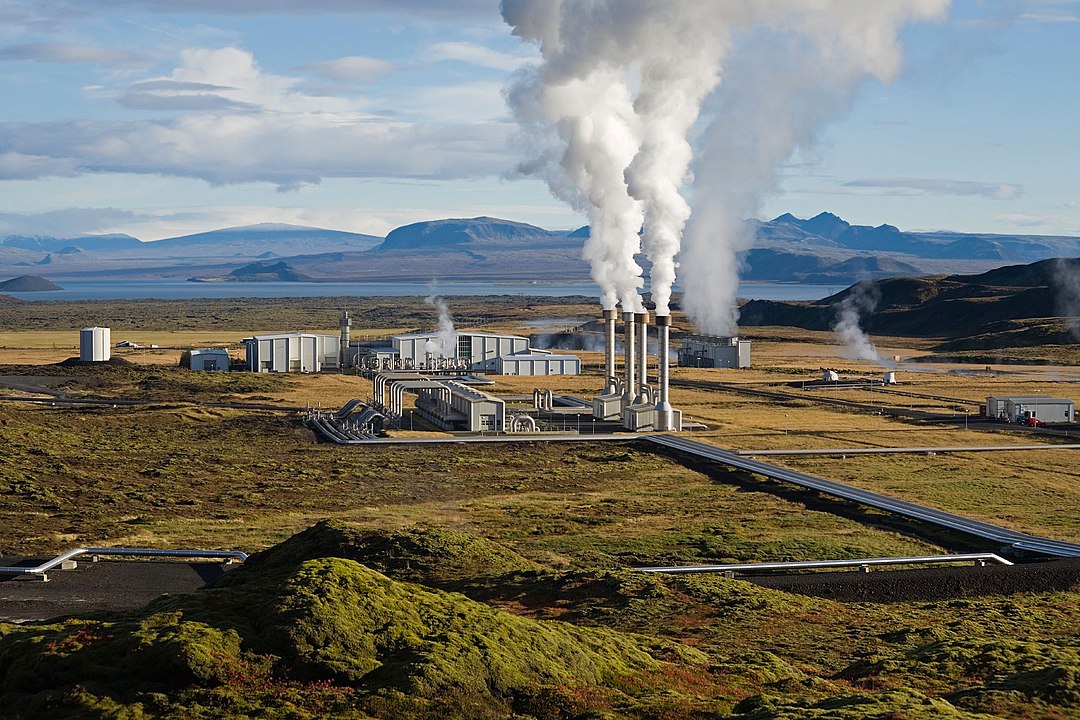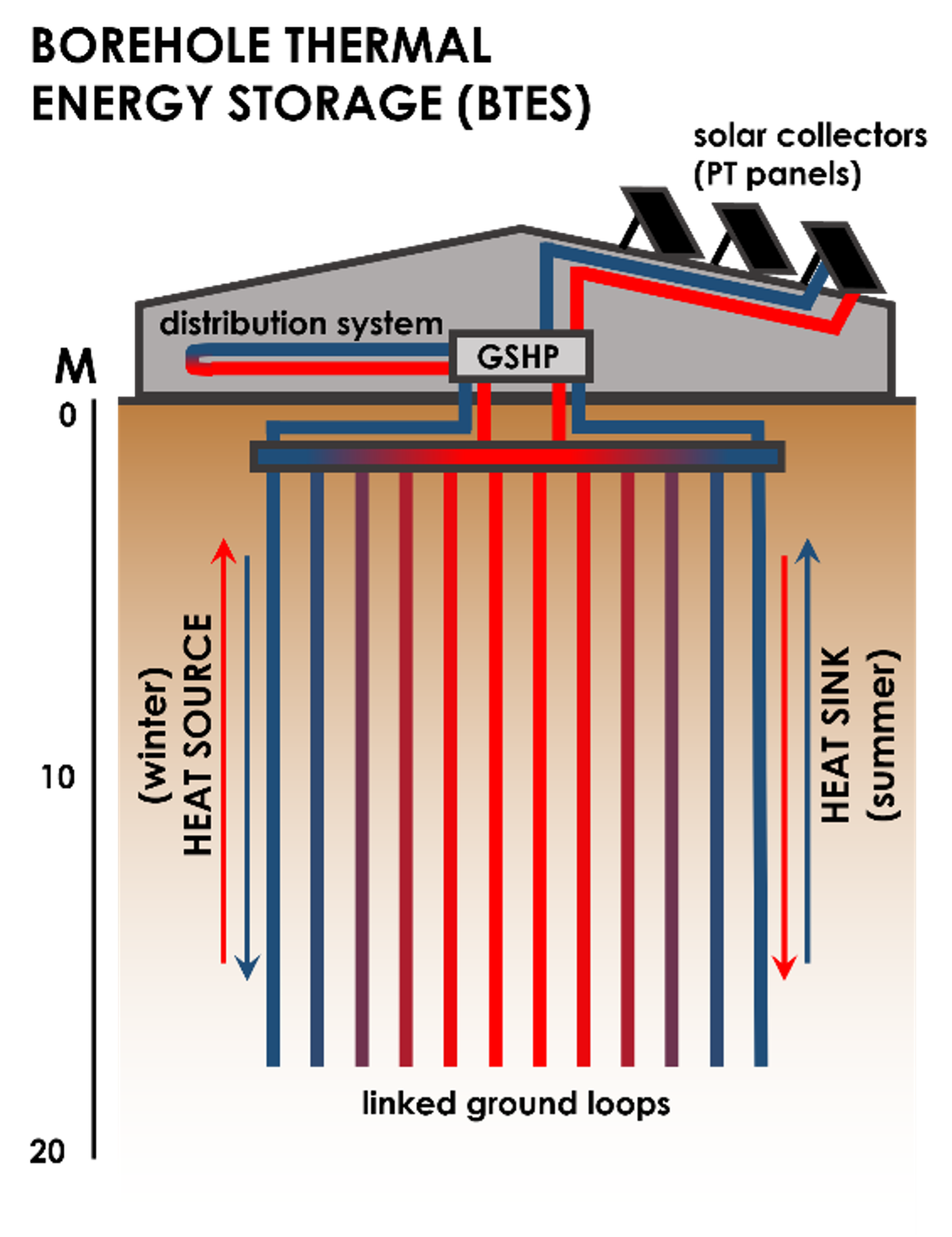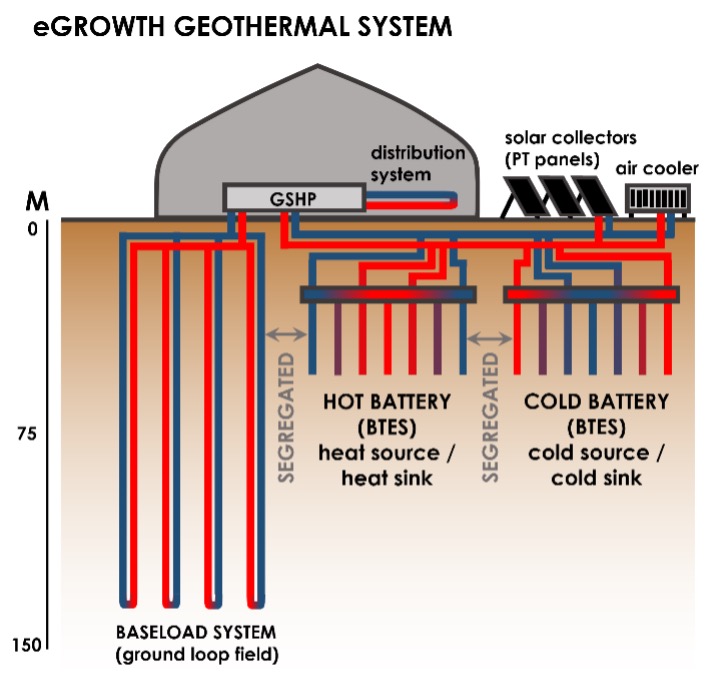Geothermal Energy
Explore how geothermal energy is revolutionizing greenhouse operations and enhancing sustainability in agriculture.
Geothermal Energy Systems
Geothermal energy systems harness renewable thermal energy from the Earth's hydrogeology for sustainable heating and cooling solutions.

Advantages of Geothermal Energy
- •
Renewable and sustainable energy
- •
Flexible installation and compact infrastructure
- •
Low greenhouse gas emissions and high energy efficiency
- •
Long lifespan of at least 30 years
- •
Versatile applications for heating, cooling, and electricity generation
Shallow Geoexchange
Shallow geoexchange systems tap into stable underground temperatures for energy-efficient heating and cooling.
Deep Geothermal
Deep geothermal systems use drilled wells to extract heat, providing long-term energy for heating and power generation.
Borehole Thermal Energy Storage (BTES)
BTES stores thermal energy in the ground for later use, providing energy-efficient heating and cooling solutions.
How BTES Works
BTES systems store thermal energy in boreholes, which can be retrieved for heating or cooling purposes during peak demand periods.
Advantages of BTES
- •
Increased energy efficiency and cost savings
- •
Supports renewable energy systems, like solar and geothermal
- •
Reduces dependency on non-renewable energy sources

eGrowth Geothermal Strategy
eGrowth's geothermal strategy combines geoexchange systems with hot and cold earth batteries to ensure optimal energy use for year-round greenhouse operations.

Geoexchange with Earth Batteries
By using both hot and cold earth batteries alongside geoexchange systems, eGrowth ensures a balanced and sustainable approach to heating and cooling.
Benefits of This Approach
- •
Balanced energy supply for varying seasonal demands
- •
Increased energy efficiency and reduced fossil fuel dependency
- •
Enhanced climate resilience for northern greenhouse climates